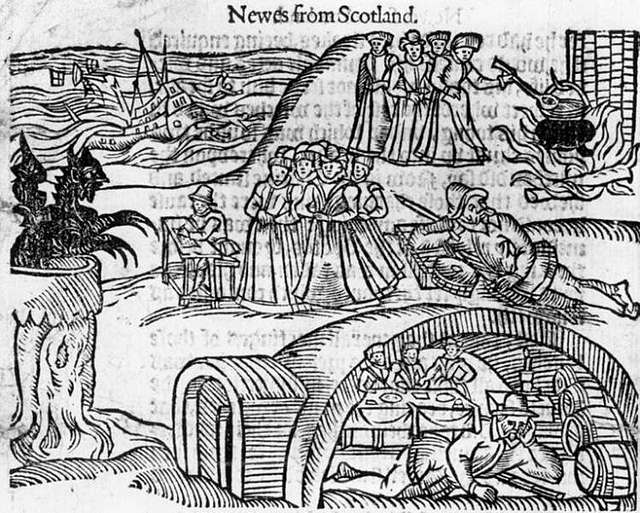“A woman’s voice is a hex. She must learn to exalt men always. If she doesn’t do that, then she is a threat. A demon whore, a witch – so says everyone and the law. So say the King and his guards. So say the witch-pricker and his sadistic friends. So say the husbands, the hates, the wives, the daughters, the God-fearing – demons are always trying to kill them, so they know. So says the hangman who sleeps with a bible in hand.” – Jenni Fagan, Hex
CW: This article has mentions of torture and sexual violence.
The Great Scottish Witch Hunts of the 16th century is one of the most gruesome, heartbreaking parts of history. Under the ruling of King James VI, over 1,500 citizens were killed under accusations of witchcraft and worshiping the devil. King James VI was extremely fearful of witchcraft as it had been deemed illegal in Britain since 1563. Amongst the many witches who were executed in the North Berwick Witch Trials, there was Geillis Duncan.
Duncan was a maid servant who was based in Tranent, a small part of East Lothian in Scotland. Her employer, David Seton, became suspicious of her healing tendencies when she was able to relieve pain and illnesses around her, despite having a poor education. Duncan would also leave the grounds in the middle of the night, and Seton never knew where she would go; as Seton was Deputy Bailiff, he took charge of the examination. Seton accused Duncan of witchcraft and worshiping the devil and despite torturous interrogation, she kept her mouth shut. Duncan didn’t admit to anything and Seton worsened his methods of torture, until she finally confessed to being a witch.
Duncan was stripped naked, shaved from head to toe, and subjected to a full body examination. In this examination, they found the devil’s mark on her neck which Duncan confessed to, naming over 60 other witches in Scotland. After enduring much pain for simply being able to heal people in a way that Western medicine could not at the time, Duncan was executed on 4th December 1591. She had supposedly tried to retract her confession on the day of her execution, with the reason that she was influenced under torture, but it did not save her from her tragic fate. There are other sources that claim she was raped, penetrated with metal and sticks and her fingernails were ripped out. Historians have argued that her case had a huge influence on the Scottish Witch Hunts in the 16th and 17th century.
Duncan’s story exposes the gratuitous and abhorrent violence against women during the Witch Hunts. In fact, although it deviated from medicine at the time — which, admittedly, was fundamentally patriarchal —people were still healing and being relieved of their pain through her work. Geillis Duncan’s alleged “crime” leading to a year of torture and, eventually, death was healing other people and leaving late at night. As is the way patriarchy self-perpetuates, the Scottish Witch hunts continued because men profited from this fear of witchcraft. Many “Witch Doctors”, or leaders of the witch hunts, gained a lot of financial benefit by charging people for exorcisms and selling body parts of the executed. This further elucidates how vulgar and exploitative men were towards those who didn’t follow their patriarchal traditions.
Though we have come a long way since the Witch Trials, we are still afraid of female knowledge and power; society continues to focus on patriarchal advantage, domination, and power. With female discrimination in the workplace, and the rise of misogynistic figures online, it’s clear that we are still fighting for a world that is equal. The witch hunts were not justice against those worshiping evil, but more a reflection of patriarchal fears towards both gendered empowerment and female sexuality.
If you want to have a more empathetic and in-depth experience with Geillis Duncan’s story, an amazing read is ‘Hex’ by Jenni Fagan.





